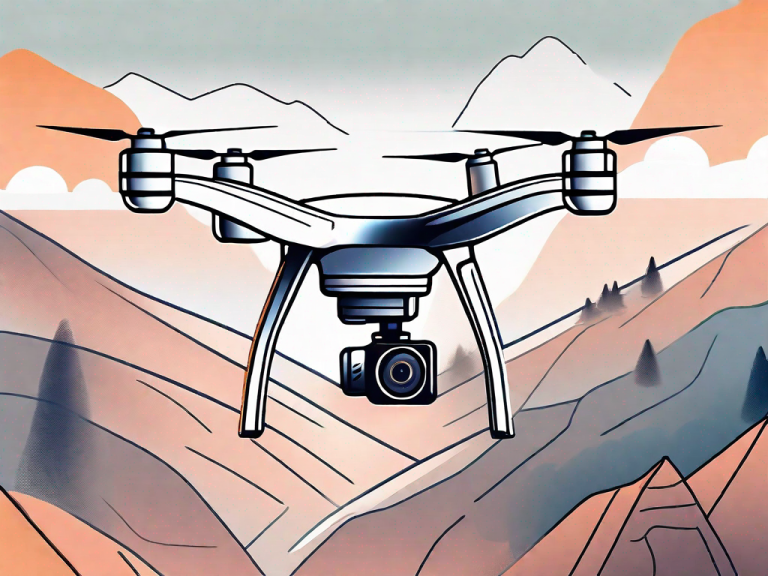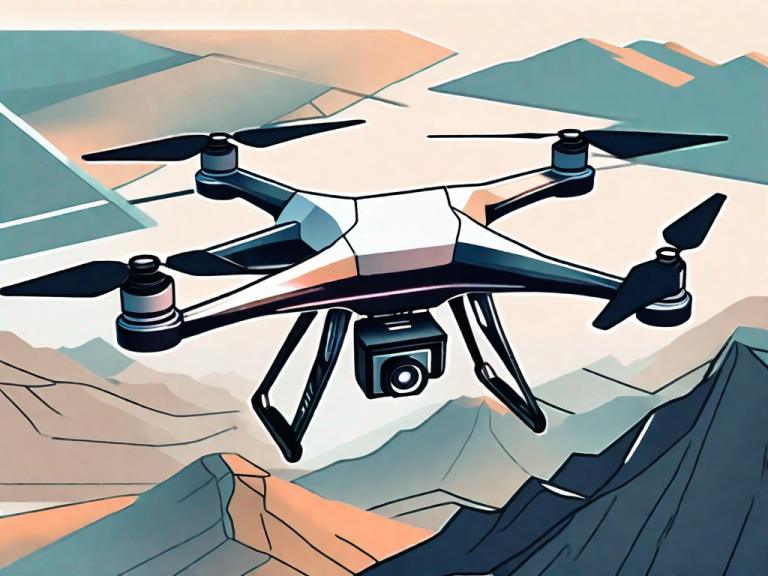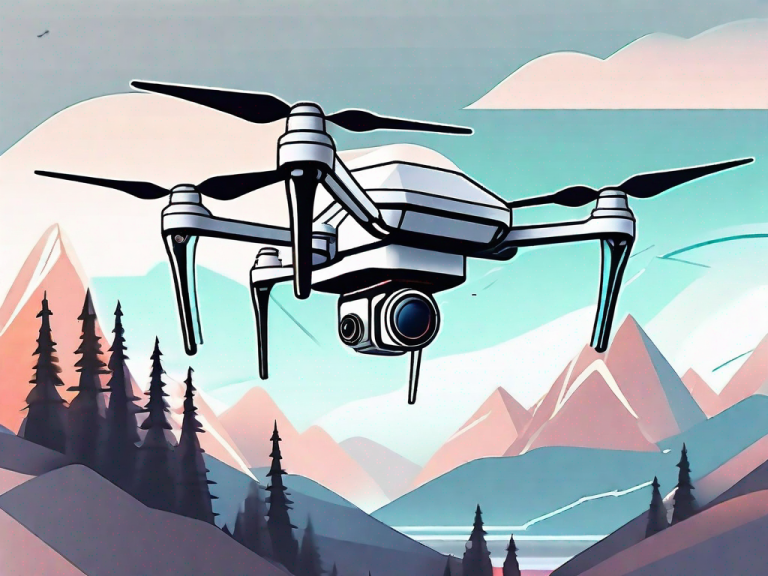Stop motion animation is a fascinating art form that allows creators to bring inanimate objects to life through a series of meticulously captured frames. One of the most crucial elements in achieving a successful stop motion animation is choosing the right camera. In this article, we will explore the various factors and considerations to keep in mind when selecting the best camera for stop motion animation.
Understanding the Basics of Stop Motion Animation
Before delving into the world of stop motion cameras, it is essential to have a solid understanding of the basics of this animation technique. Stop motion animation involves capturing a series of still images and then playing them in rapid succession to create the illusion of movement. Each frame is carefully composed and adjusted to ensure smooth and seamless motion. The camera plays a crucial role in capturing these frames, which is why selecting the right camera is of utmost importance.
One important aspect to consider when selecting a camera for stop motion animation is the resolution. Higher resolution cameras can capture more detail in each frame, resulting in a higher quality final animation. However, higher resolution cameras also require more storage space for the large number of images that will be captured. It is important to strike a balance between resolution and storage capacity to ensure optimal results.
In addition to resolution, another factor to consider is the camera’s ability to connect to a computer or external monitor. This feature allows animators to view the captured frames in real-time, making it easier to adjust and fine-tune the animation as needed. Some cameras even offer remote control capabilities, allowing animators to control the camera settings and capture images without having to physically touch the camera, minimizing the risk of accidentally disturbing the setup.
Key Factors to Consider When Choosing a Camera for Stop Motion
When choosing a camera for stop motion animation, there are several key factors to consider. One of the primary considerations is resolution. Higher resolution cameras offer greater detail, which can be especially beneficial when working with smaller objects or intricate sets. Additionally, cameras with a higher resolution allow for greater flexibility during the post-production process, as they provide more room for cropping and adjustment without sacrificing image quality.
Another important factor to consider is the camera’s color depth and dynamic range. Color depth refers to the number of colors a camera can produce, while dynamic range refers to the camera’s ability to capture a wide range of tones. Opting for a camera with good color depth and dynamic range can significantly enhance the overall visual quality of your stop motion animation.
Frame rate is also a vital consideration. The frame rate determines the number of frames captured per second, ultimately affecting the fluidity of the animation. Choosing a camera with adjustable frame rate settings allows for greater creative control, as different scenes may benefit from varying frame rates. This flexibility ensures that you can capture the desired motion and pacing for your stop motion animation.
Manual controls are essential for achieving precise control over the camera settings. Being able to manually adjust parameters such as exposure, focus, and white balance enables you to tailor the camera settings to the specific needs of each shot. This level of control is particularly important in stop motion animation, as it allows for consistent and uniform visuals across all frames.
Lastly, battery life and power options should not be overlooked. Stop motion animation is a time-consuming process that requires extensive shooting sessions. Having a camera with a long battery life or the ability to connect to an external power source ensures that you won’t have to constantly interrupt your workflow to recharge or switch batteries. This factor plays a significant role in maintaining a seamless and uninterrupted animation process.
Different Types of Cameras Suitable for Stop Motion Animation
When it comes to choosing the right camera for stop motion animation, there are several different options to consider. Each camera type has its own advantages and disadvantages, and the best choice ultimately depends on your specific needs and preferences.
DSLR (Digital Single-Lens Reflex) cameras are a popular choice among stop motion animators due to their versatility and image quality. These cameras offer interchangeable lenses, allowing for greater creative possibilities. While DSLRs provide excellent image quality and manual control, they can be bulkier and more expensive compared to other options.
Mirrorless cameras have gained significant popularity in recent years, thanks to their compact size and high-quality image performance. Mirrorless cameras offer similar capabilities to DSLRs while being more lightweight and portable, making them a great choice for on-the-go animators. However, they may have a more limited range of available lenses.
For those looking for a more compact and budget-friendly option, compact cameras can also be a viable choice for stop motion animation. Compact cameras are smaller and often more affordable, making them accessible to beginners or those on a tighter budget. While they may not offer the same versatility as DSLR or mirrorless cameras, they can still produce excellent results for simpler stop motion projects.
Additionally, traditional film cameras can also be used for stop motion animation, providing a unique and nostalgic aesthetic. Film cameras offer a distinct look that digital cameras may struggle to replicate. However, working with film can be more challenging and expensive due to the film development and processing required.
Evaluating Image Quality: Resolution, Color Depth, and Dynamic Range
Image quality is undoubtedly a crucial aspect when it comes to choosing a camera for stop motion animation. The resolution of the camera plays a vital role in the level of detail that can be captured in each frame. Higher resolution cameras are capable of capturing finer details, which can be especially important when working with miniature models or intricate sets.
In addition to resolution, color depth and dynamic range also significantly impact image quality. Color depth refers to the number of colors a camera can produce, while dynamic range refers to its ability to capture a wide range of tones from shadows to highlights. Cameras with higher color depth and dynamic range can produce more vibrant and visually appealing stop motion animations.
When comparing different cameras, it is essential to consider their specifications and reviews to evaluate their image quality. Look for cameras that offer high resolution, excellent color depth, and a wide dynamic range to ensure your stop motion animations are visually captivating.
Frame Rate Considerations: Choosing a Camera with Adjustable Settings
The frame rate of a camera is an important consideration in stop motion animation. Frame rate refers to the number of frames captured per second and influences the smoothness and fluidity of the animation. Different scenes and effects may require varying frame rates to achieve the desired results.
Choosing a camera with adjustable frame rate settings provides greater flexibility and control in capturing stop motion animations. Higher frame rates, such as 24 frames per second (fps), create a smoother motion, while lower frame rates, such as 12 fps, lend a more staccato or jerky effect. Being able to adjust the frame rate allows animators to tailor their animations to match their creative vision.
Consider cameras that offer a range of adjustable frame rate options to ensure you have the flexibility you need to achieve the desired motion in your stop motion animations.
The Importance of Manual Controls in a Camera for Stop Motion Animation
Manual controls are crucial for achieving precise control over camera settings in stop motion animation. Being able to manually adjust exposure, focus, and white balance allows animators to fine-tune the look and feel of each frame consistently.
In stop motion animation, maintaining consistency across multiple frames is vital for creating a visually cohesive animation. By having control over manual settings, such as exposure and focus, animators can ensure a uniform look throughout the entire animation, enhancing the visual quality and overall impact of the final product.
When choosing a camera for stop motion animation, prioritize cameras that offer comprehensive manual control options to achieve the level of precision required for your animations.
Exploring Different Lens Options and Their Effects on Stop Motion
Lenses play a crucial role in stop motion animation, as they can dramatically affect the perspective, depth of field, and overall visual style of the animation. Different types of lenses offer unique characteristics that can enhance or alter the way objects and sets are captured.
Wide-angle lenses, for example, can offer a more expansive view, allowing you to capture larger sets or multiple objects in a single frame. These lenses can create a sense of depth and scale in your animations. Conversely, telephoto lenses can compress space and bring distant subjects closer, creating a different visual effect entirely.
Consider the creative possibilities that different lenses can offer when choosing a camera for stop motion animation. Opt for cameras that offer interchangeable lens systems to have the flexibility to experiment with various focal lengths and effects.
Assessing the Importance of Image Stabilization in a Camera for Smooth Animations
Image stabilization is a valuable feature to consider when selecting a camera for stop motion animation, especially if you plan to shoot handheld or without the use of a tripod. Animation requires capturing individual frames with extreme precision, and any unintentional camera movement can result in jittery or shaky animations.
Having a camera with reliable image stabilization can help mitigate the effects of camera shake, resulting in smoother and more professional-looking animations. Look for cameras with built-in optical or electronic image stabilization to ensure your frames remain steady and consistent throughout the animation process.
Examining the Role of Auto-Focus Systems in Capturing Sharp Stop Motion Shots
Auto-focus systems can be a particularly useful feature for capturing sharp and focused stop motion shots. While manual focus can provide precise control, it may not always be practical, especially when working with moving objects or intricate scenes.
Some cameras offer advanced auto-focus systems that can track and maintain focus on subjects in motion. These systems allow for sharper and more consistent focus, even during fast-paced animations. When considering a camera for stop motion animation, look for models with reliable and fast auto-focus capabilities to ensure your shots remain sharp and well-defined.
Battery Life and Power Options: Ensuring Optimal Performance During Lengthy Shoots
Battery life and power options are essential considerations for stop motion animation, as shooting sessions can often be lengthy and time-consuming. The last thing you want is for your camera to run out of power in the middle of an important scene.
Look for cameras with long-lasting batteries or the ability to connect to an external power source. Having a camera that can keep up with your shooting demands without frequent battery changes or interruptions ensures that your animation process remains uninterrupted and maintains its momentum.
Considering Connectivity Options: USB, HDMI, and Wi-Fi Features
Connectivity options can also play a role in facilitating the stop motion animation process. USB, HDMI, and Wi-Fi features offer various benefits and convenience, depending on your specific workflow and requirements. These features allow for seamless file transfers, live preview options, or remote control capabilities.
If you prefer immediate access to your shots or want to preview your frames in real-time, consider cameras with Wi-Fi capabilities or HDMI outputs for connecting to external monitors or devices. USB connectivity also allows for quick and straightforward file transfers to your computer or storage devices.
Assess your workflow and consider the connectivity options that align with your needs to ensure a smooth and efficient stop motion animation process.
Best Accessories to Enhance Your Stop Motion Camera Setup
While choosing the right camera is crucial for stop motion animation, there are various accessories that can further enhance your camera setup and the overall animation process.
A sturdy tripod is an essential accessory that provides stability and eliminates the risk of camera shake during the animation process. Look for tripods that offer smooth panning and tilting capabilities to achieve precise camera movements.
A remote shutter release or intervalometer can also be valuable tools for stop motion animation, as they allow you to trigger the camera without physically touching it, minimizing the risk of unintended camera movement or disruption to your set.
Lighting equipment, such as continuous studio lights or portable LED panels, can help create consistent and controlled lighting conditions for your stop motion animations. Proper lighting plays a significant role in setting the mood and enhancing the visual quality of your animations.
Furthermore, using a dedicated animation software or app can streamline your workflow, allowing you to manage and organize your frames efficiently, apply effects, and even preview your animation in real-time.
Consider these accessories as valuable additions to your stop motion camera setup, ensuring a more robust and professional animation process.
Budget-Friendly Camera Options for Stop Motion Beginners
You don’t necessarily need to break the bank to start your stop motion animation journey. There are several budget-friendly camera options that can deliver satisfactory results for beginners or those with limited resources.
Compact cameras, as mentioned earlier, can be an affordable option for stop motion beginners. These cameras often offer decent image quality and manual control features without the high price tag associated with DSLRs or mirrorless cameras.
Another option is to explore entry-level DSLRs or older camera models that still offer suitable specifications for stop motion animation. While they may lack some of the latest features and advancements, they can still perform admirably and allow you to learn and grow your skills in the art of stop motion animation.
Consider investing in a second-hand camera or exploring discounted models to find a budget-friendly camera that meets your basic stop motion animation needs without stretching your budget too thin.
High-End Camera Choices for Professional Stop Motion Artists
On the other end of the spectrum, professional stop motion artists or those looking to take their animations to the next level may prefer high-end camera options that offer cutting-edge features and exceptional image quality.
For these professionals, investing in top-of-the-line DSLRs or mirrorless cameras can provide unparalleled image quality, advanced manual controls, and the ability to shoot in higher resolutions. These cameras often offer greater customization options and enhanced performance, allowing for more creative freedom and precision.
Additionally, professional-grade cinema cameras are another option for those seeking the highest level of image quality and versatility. These cameras offer incredibly sharp images, exceptional dynamic range, and extensive manual control options. However, they can be significantly more expensive and require additional equipment and expertise to operate effectively.
When considering high-end camera choices, it is essential to assess your specific needs and budget to ensure you are making an informed investment that aligns with your professional goals and expectations.
Conclusion
In conclusion, choosing the best camera for stop motion animation requires careful consideration of various factors. Resolution, color depth, dynamic range, frame rate, manual controls, and lens options are all key considerations when selecting a camera. Additionally, evaluating image stabilization, auto-focus systems, battery life, connectivity options, and accessories can significantly enhance the overall animation process.
Whether you are a beginner on a budget or a professional seeking the highest level of image quality, there are suitable options available. By understanding the specific requirements of your stop motion animation projects, you can make an informed decision and select a camera that will help bring your creative vision to life.
With the right camera in hand, coupled with a strong artistic vision and meticulous attention to detail, you are well on your way to creating captivating and visually stunning stop motion animations.









